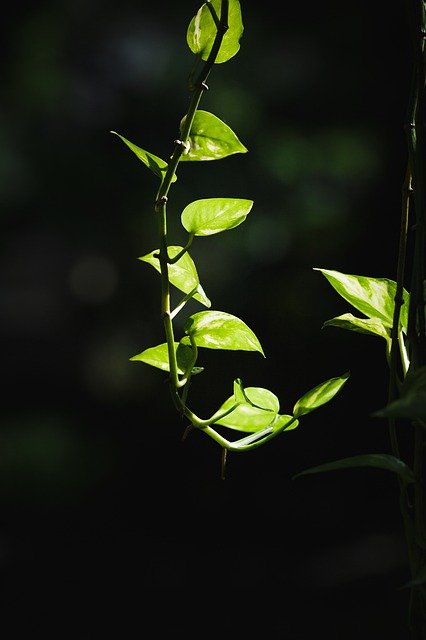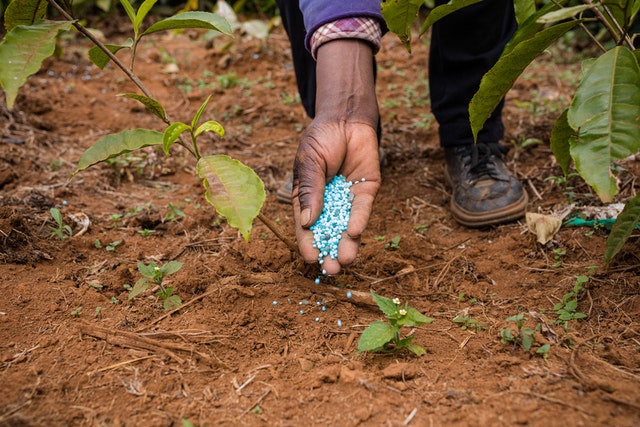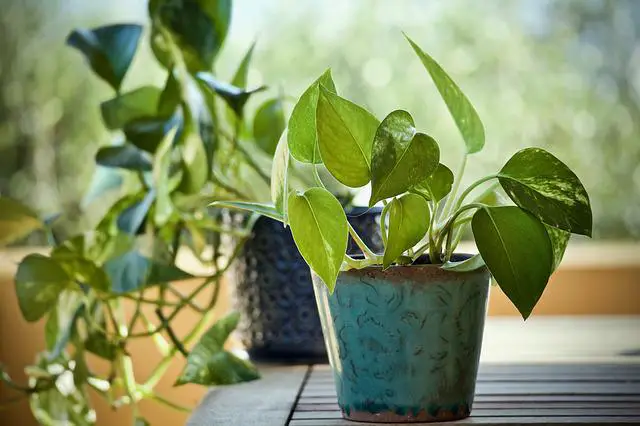Are the leaves of your Satin Pothos Leaves Curling? Apart from the curling, is the plant getting discolored? Well, if these are the cases with your plant, it’s high time you did something urgent about it. The plant is gradually waning and may die if nothing is done on time.
Satin Pothos is a beautiful houseplant, but it is prone to leaf curling, which can be caused by several factors, including overwatering, underwatering, low humidity, and pests, and each issue has specific solutions to prevent and treat the problem.
We’ll help you see why the plant leaves are getting folded and what to do to help the plant regain its strength. Keep up with this article to learn more about the Pothos plant.
Satin Pothos Leaves Curling

Pothos plant is known for its beauty and elegance. Its leaves are dark green toned with silver markings, adding more aesthetics to the plant. These plants fit perfectly into any space you place them in the home.
One way or the other, this plant doesn’t show its full glory when its leaves begin to curl. There are different reasons why satin pothos leaves curl. It might result from pest and disease invasion, underwatering, direct sunlight, or temperature stress.
To provide a solution to pothos leaves curling, you need to identify the causes. The problem and solutions of pathos leaf curling are discussed below to help keep your plant flourishing.
1. Underwatering or Overwatering
One of the major reasons why your satin pothos leaves curl is as a result of underwatering. The plant cell will shrink due to dehydration if there’s inadequate water. The plant’s leaves will wither, curl, and later die if there’s insufficient water.
Once you notice the leaves curling, check if you are underwatering them. Start watering properly so the leaves can perk up in a couple of days.
As much as satin pothos leaves curls from underwatering, the same can happen when you water it too much. Overwatering the plant can lead to root rot and make the leaves curl.
Once root rot sets in, there won’t be enough supply of water from the stem to the leaves, which will make the leaves curl as a result of dehydration. You’ll notice that the leaves of the plant retain so much water and curl at the same time due to root rot. If your plant’s leaves curl as a result of root rot, then you can save it by uprooting it from the pot.
Cut off the rotten part and replant the remaining healthy part in well-draining soil and water properly. Also, the type of water used will determine how the plant will turn out.
Rainwater or filtered water is best to water this plant. You can also make use of tap water set aside for 24 hours because the fluorine and chlorine in it will have dissipated before use. While watering your pothos plant, ensure the water drains completely from the bottom of the pot.
Allow the soil to dry out completely before watering again.
2. Temperature Stress
Temperature stress is another major factor that can make your satin pothos leaves curl. This is when the plant is exposed to too much heat. When pothos leaves encounter temperature stress, their leaves begin to curl inward.
Place this plant indoors to monitor the temperature it gets. Satin pothos thrive under indirect sunlight, especially when placed in a bright spot. Direct sunlight can make the leaves burn.
When placed inside the house, ensure it is in a position with moderate temperature. Avoid extreme cold or heat, which can harm the plant’s leaves. A temperature between 65-85°F (18-30 °C) will suffice for this plant, and anything below or above this range will make the plant curl.
3. Too Much Fertilizer

Fertilizers are nutrients to the plant, but they make satin pothos leaves curl if they are in excess. Fertilize this plant once a month with well-diluted fertilizer. Add the fertilizer in small quantities, so it doesn’t lose its variegation and foliage.
Too much fertilizer can cause nitrogen and salt to build up in the leaves, which can make the leaves curl.
Aside from leaves curling, over-fertilizing can also lead to plant tips curling downward, leaves turning to a darker shade of yellow or green, and leaves beginning to get smaller.
Also, over fertilizing can lead to crusty or white soil, rotten leaves, and leaves gradually falling off. To solve this problem and make the plant regain its freshness, remove it and replace the soil with a fresh one.
You can also drench the soil in water to eliminate excess nutrients. After transferring the plant to fresh soil, do not fertilize for a while. When it’s time to fertilize, dilute the nutrient in water before adding it to the soil.
Ensure the fertilizer used is rich in oxygen to keep the leaves alive. Do not fertilize during the winter months, and in other seasons, fertilize once in a while.
4. Insect and Disease Problems

When satin pothos plants encounter any insect or disease problem, their leaves begin to curl. Spider mites and Mealybugs often disturb satin pothos, sucking the plant’s sap and making the leaves curl.
Once you spot any of these insects, ensure you remove them before they cause more damage. You can eliminate the pest using an insecticide (either homemade or store-bought) or clean the leaves with alcohol.
This plant can also face some fungal diseases, making the leaves curl. Most fungal diseases are caused by root rot. You should cut off dead foliage to prevent further damage.
5. Excess Exposure to Light
Most pothos species, including satin pothos, thrive in bright, indirect sunlight. Regularly exposing these plants to direct light can cause their leaves to curl downward or inward. Place the plant in a location where it won’t face the source of light directly.
On the other hand, receiving too little light can also cause the satin pothos leaves to curl towards the light direction. This means the plant is struggling to get to the light source. In this case, put the pothos in a sunny place where it can get enough light.
6. Low Humidity
When the satin pothos is in an environment with low humidity, its leaves will begin to curl. Sometimes, the leaves may even begin to turn yellow. Typically, satin pothos thrive in areas with high levels of humidity, which means dry air is not favorable for them. Make sure the plant is not near a window or an air vent.
To increase its humidity levels, place a humidifier near the satin pothos. Also, you can mist the plant regularly or group it with other plants. Nevertheless, practice moderation when trying to improve the plant’s humidity levels. Remember that pests and diseases thrive in moist environments.
More on pothos plant:
Outro
Pothos leaves get curled once they get exposed to any unpalatable conditions. As the article pointed out, some of these conditions include exposure to direct light, over/underwatering, insect or disease infestation, and excess fertilizer application.
These conditions put the pothos plant at risk of dying eventually.
Protecting your plant from situations that might threaten its existence is important.
Frequently Asked Questions
Why are my satin pothos leaves curling?
Curling leaves indicate that trouble is looming for the plant, and this may be due to consistent underwatering, overwatering, exposure to direct sunlight, and excess fertilizer.
Curling may also be a sign of a disease or insect infestation. The satin pothos plant is a vibrant plant that spreads its leaves to show its beauty and grace.
Once you see that these leaves are getting curled up, you must do everything possible to get them to spread out again.
How do you fix curled pothos leaves?
Water the pothos plant and ensure that its leaves are always moist. IF the soil is waterlogged, you need to repot the plant but ensure to use a fresh potting mix when repotting.
If the situation is caused by excess fertilizer, redress the problem by ensuring that the excesses are flushed out. You can do this by draining the soil with water and repotting the plant once it’s done.
Also, get rid of pests from the plant using pesticides.
How often should I water Satin Pothos?
Watering the satin pothos plant is something that shouldn’t be treated with levity. You must be conscious of the process because it’s vital to plant growth. Water the plant every one-two weeks.
Ensure that the soil is dried before watering again. When the temperature is hot, water more; and water less when the temperature is low.

Hey, I’m Lisa and I’ve been an avid gardener for over 30 years. I love writing, talking and living in the garden! Feel free to connect with me on my socials below

